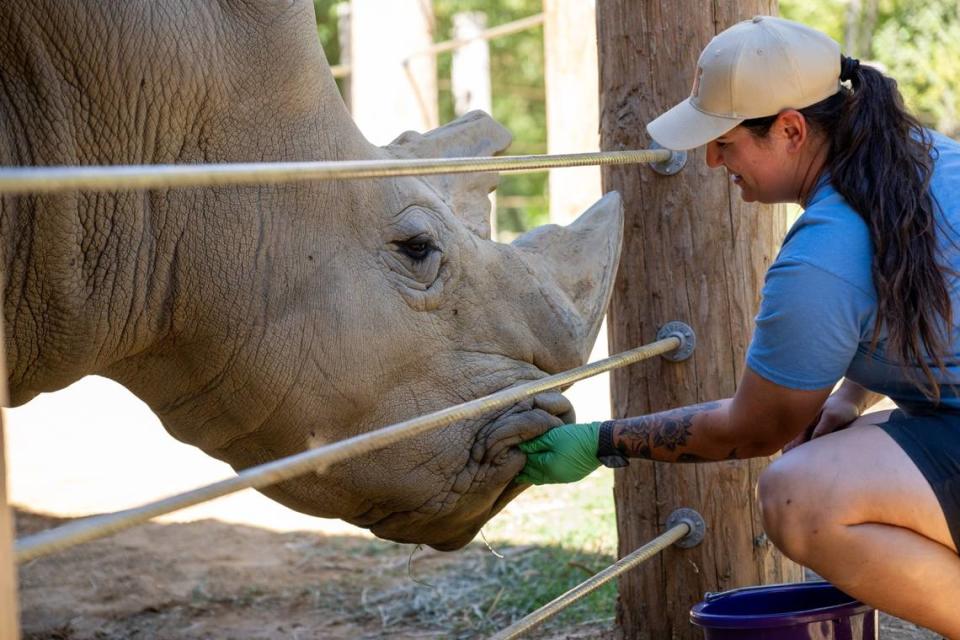Sacramento Zoo welcomes its first rhino ever. Here’s what we know about him and his kind
The Sacramento Zoo has been operating for 96 years. On Tuesday, it became home to the first rhinoceros in zoo history.
A southern white rhinoceros named J Gregory is now visible in his enclosure after being transported from the San Diego Zoo Safari Park on Tuesday, according to a Sacramento Zoo news release.
J Gregory could be spotted near the back of his habitat, formerly home to an African bongo antelope, on Wednesday. The 28-year-old southern white rhino will likely be given full access to his new home by this weekend, according to the news release.
He’s sandwiched between the Galapagos tortoise and Grévy’s zebra enclosures at 3930 W. Land Park Drive.
In an email to subscribers, Sacramento Zoo animal care supervisor and ungulate (hoofed mammal) keeper Jocelyn Katzakian described J Gregory as a “calm guy” who loves scratches, naps and training sessions.

Facts about white rhinoceroses
The two subspecies of white rhinoceros include the threatened southern whites and critically endangered northern whites, the Sacramento Zoo wrote in a news release. J Gregory is a southern white.
White rhinos are the second-largest land mammals, behind elephants. The animals can grow up to 15 feet and weigh between 4,000 and 5,000 pounds, the zoo said.
The square-lipped rhinos have nearly no hair and are found in several regions across Africa, according to the nonprofit organization World Wildlife Fund.
As of 2018, there are two northern whites left due to years of hunting for their horns. The white rhino is particularly susceptible to poaching because they’re typically unaggressive and live in groups.
What do you want to know about life in Sacramento? Ask our service journalism team your top-of-mind questions in the module below or email servicejournalists@sacbee.com.

